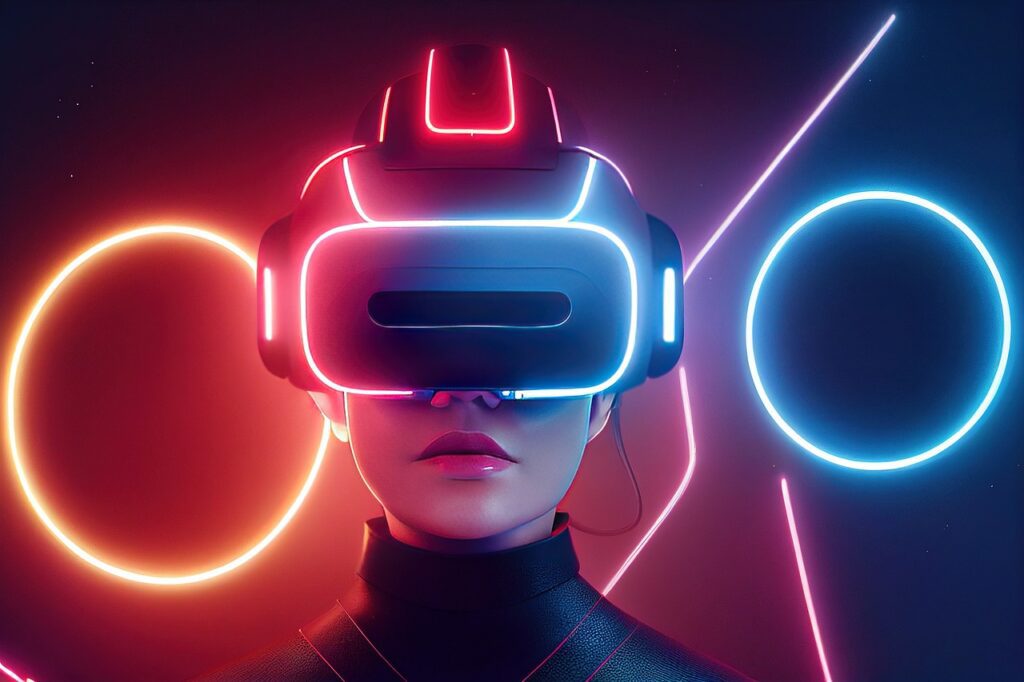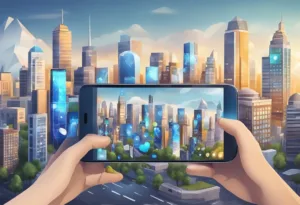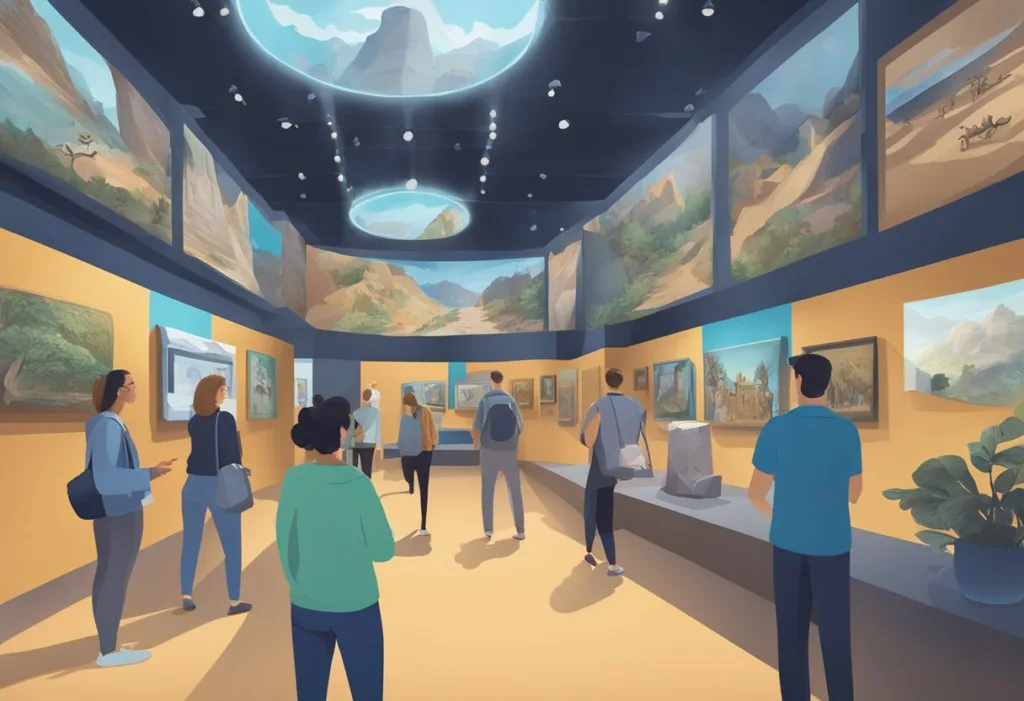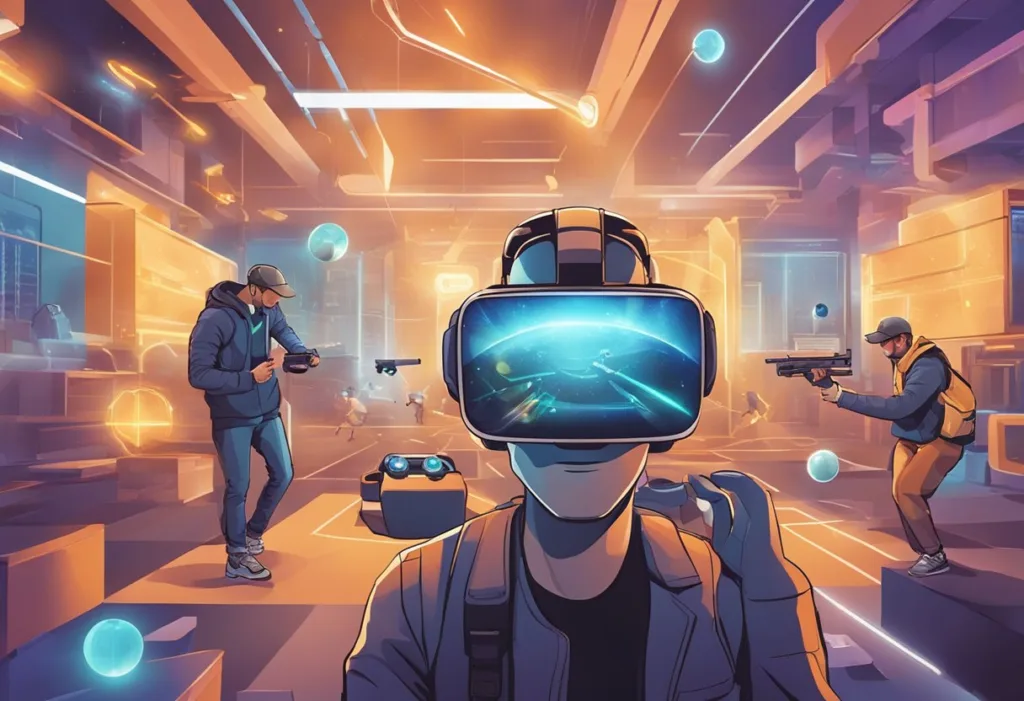Developing metaverse games has become increasingly popular as virtual reality and augmented reality technologies have advanced. With the introduction of these new platforms, developers can create immersive experiences that extend beyond traditional gaming environments. As game development continues to evolve, game designers must consider how they can best take advantage of these technological advances to create innovative and engaging titles that will appeal to players. In this article, I will show you the basics of how to develop Metaverse games: insights from game developers.
Key Takeaways:
- Research the metaverse platform you are working on.
- Brainstorm ideas for how to use the platform’s features in interesting ways.
- Create a prototype of your game and develop an engaging story.
- Design unique gameplay mechanics that make use of the platform’s features.
- Create 3D environments incorporating virtual elements such as avatars and props.
- Test the game thoroughly before releasing it to players.
- Incorporate player feedback into your game design process.
- Utilize analytics to identify areas of improvement for the game.
- Release the game and continue to monitor player feedback.
How to Develop Metaverse Games
Research the Metaverse Platform
Before starting any project, experienced game developers should research the metaverse platform they are working on to make sure they understand all of its features and capabilities.
Brainstorm Ideas
Once the developer understands the features of the platform, they should brainstorm ideas for how to use these elements in interesting ways to create a unique metaverse game.
Create a Prototype
After brainstorming ideas, experienced developers should create a rough prototype of the game to test out their ideas and see how they work in practice.
Develop the Story
Once the prototype is complete, developers should focus on creating an engaging story for the game that will captivate players and keep them involved in the experience.
Design the Gameplay Mechanics
Experienced developers should then focus on creating a unique set of gameplay mechanics that make use of the platform’s features and create an enjoyable experience for players.
Create the 3D Environments
Once the game’s story and mechanics are complete, experienced developers should focus on creating the 3D environments for the game.
This includes building location-based features and incorporating virtual elements such as avatars and props into the game world.
Test the Game
Experienced developers should test the game thoroughly to make sure it is functioning correctly before releasing it to players on the gaming platform. This includes making sure that all features are working as intended and game completely bug-free.
Incorporate Feedback
After testing the game, professional game developers should make use of player feedback to refine the experience and ensure it is engaging for players and gaming communities.
This could include making improvements to the interface, adding new objectives, or improving existing features.
Utilize Analytics
Experienced game designers should also take advantage of user data and analytics to identify areas of improvement for the game.
This could include gathering insights on which features players are enjoying the most, as well as identifying any areas where players are struggling.
Release the Game
Once you have your metaverse game developed, experienced developers should release it to the public and continue to monitor player feedback to ensure they are having a positive experience.
This could include making changes and updates based on player feedback or releasing new content such as expansions or downloadable content.
What is Game Development for Metaverse?
Understanding the Metaverse
Developing a metaverse game requires a deep understanding of the world players will inhabit. It’s important to understand how various elements work together to create an engaging experience and where potential opportunities for innovation lie within this platform.
Creating Unique Experiences
While some developers may prefer to build games that are similar to existing titles, experienced developers understand that the metaverse provides an opportunity for creating unique experiences. This includes crafting stories and characters that go beyond traditional gaming conventions.
Exploring New Mechanics
Games developed for the metaverse should strive to push the boundaries of what is possible within this platform.
Players should be encouraged to interact with elements in ways that are not typically seen in traditional games. This could include exploring new forms of locomotion, using avatars to interact with the environment, or engaging in inter-player relationships.
Building Connected Worlds
Developing a connected world for players to explore is an essential part of creating compelling metaverse experiences.
Developers should consider how worlds can be interconnected and what type of activities players can do in each area. They should also consider how the game’s story can be told through these connected worlds.
Embracing Open Worlds
The metaverse allows developers to create open-world games with no clear endpoint or objective.
This gives players the freedom to explore and interact with the environment, providing an engaging experience that rewards players for exploration.
Adapting to Hardware Limitations
As the metaverse platform evolves, developers must consider how their game will adapt to hardware limitations.
This includes optimizing the game’s graphics and performance so that it can be enjoyed by a wide range of users.
Incorporating Updates and Expansions
To keep players engaged, developers must think ahead and plan for future updates and expansions. This could include introducing new characters or environments, adding new objectives, or improving existing features.
Inventing New to Play
The metaverse is an ideal platform for inventing new ways to play. Developers should explore unique gameplay mechanics that make use of the game’s virtual environment.
This could include exploring new forms of locomotion, using avatars to interact with the environment, or engaging in inter-player relationships.
Utilizing Available Tools
Experienced developers understand that utilizing available tools is essential for creating compelling metaverse games.
This includes incorporating 3D engines and middleware solutions such as Unity or Unreal Engine, as well as leveraging existing platforms such as Steamworks and PlayStation Network.
Insights from Game Developers for Metaverse Game Development
Don’t be afraid to experiment
Experienced game developers understand that the best way to develop for the metaverse is to experiment and explore different ideas.
By pushing the boundaries of what is possible in the platform, game designers can create unique and engaging experiences.
Leverage existing elements
When developing a metaverse game, experienced developers understand the importance of leveraging existing elements.
This includes incorporating 3D engines, middleware solutions, and existing platforms to create a more immersive experience for players.
Focus on creating new experiences
While some game developers may prefer to simply replicate existing titles, experienced game designers understand that the metaverse provides an opportunity for creating entirely new experiences. This includes crafting stories and characters that go beyond traditional gaming conventions.
Make use of the metaverse’s unique features
Game developers should strive to make use of the platform’s unique features when creating metaverse games. This could include exploring new forms of locomotion, using avatars to interact with the environment, or engaging in inter-player relationships.
Design for the future
Experienced game developers understand that it is important to plan when designing metaverse games.
This includes considering how the game can be adapted to new hardware limitations, as well as incorporating updates and expansions that will keep players engaged in the long term.
Incorporate social elements
A key element of metaverse game design is incorporating social elements. This could include allowing players to join guilds, participate in group activities, or engage in player-versus-player combat.
Make use of analytics
Experienced game designers take advantage of user data and analytics when creating metaverse games.
This can help them identify potential opportunities for innovation, as well as identify areas of the game that need to be improved.
Utilize feedback from players
Experienced game designers understand that it is important to listen to player feedback to create successful metaverse games.
This could include gathering insights on what features players are enjoying and what elements need improvement.
Embrace new technology
Experienced game developers understand that it is important to embrace new technologies and platforms when creating metaverse games.
This could include incorporating virtual reality elements or leveraging blockchain technology to create an even more immersive experience for players.
Game Development Apps for Metaverse
Unity
Unity is a popular 3D engine used by the gaming industry and metaverse game developers to create immersive metaverse experiences.
It offers a range of tools and features for creating 3D environments as well as interactive characters, props, and more.
Unreal Engine
The Unreal Engine is another powerful 3D engine that can be used to create stunning virtual worlds for metaverse game creation and traditional video games.
It offers a range of tools for making 3D models, textures, animations, and more for developing games.
CryEngine
The CryEngine is a powerful 3D engine that can be used to create immersive metaverse virtual world experiences.
It offers a range of features such as advanced physics simulations and support for virtual reality headsets.
Lumberyard
Lumberyard is a 3D engine developed by Amazon that can be used to create AAA-level metaverse games. It offers a range of features such as real-time lighting and physics simulations, support for virtual reality, and more.
Forge
Forge is an open-source game development platform designed specifically for the creation of metaverse games. It provides developers with a range of tools for creating 3D worlds, characters, and props.
High Fidelity
High Fidelity is an open-source platform specifically designed for the creation of metaverse games. It offers a range of features such as voice chat, avatars, customization options, and more.
Roblox Studio
Roblox Studio is a game development platform specifically designed for the creation of metaverse games. It provides developers with a range of tools for building 3D worlds, characters, and props.
Worlds Adrift
Worlds Adrift is an open-source game engine specifically designed for the creation of multiplayer metaverse experiences. It offers a range of features such as advanced physics simulations and support for virtual reality headsets.
Bottom Line
Creating a successful metaverse game requires an experienced and knowledgeable game developer who understands the platform on which they are building.
They should have a clear understanding of the features available to them to create unique experiences for players.
Developers should use new technologies when creating their games, such as virtual reality elements or blockchain technology.
Finally, experienced developers should take advantage of user data and analytics to identify areas of improvement for the game.














